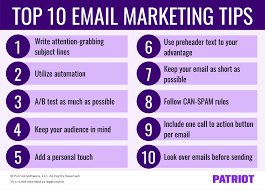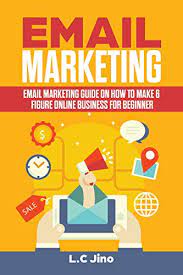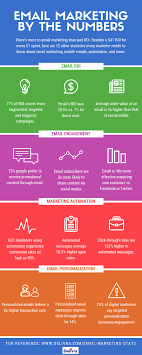Top 5 Email Marketing Tips for Effective Campaigns
Email marketing continues to be a powerful tool for businesses to connect with their audience, increase brand awareness, and drive conversions. However, with inboxes flooded with promotional emails, it’s crucial to stand out and deliver value to your subscribers. Here are five email marketing tips to help you create effective campaigns:
Build a Quality Email List:
The success of your email marketing campaign starts with a quality email list. Focus on growing an engaged audience of individuals who are genuinely interested in your products or services. Implement strategies like opt-in forms on your website, social media promotions, and lead magnets to attract subscribers who are more likely to convert.
Personalize Your Emails:
Personalization is key when it comes to capturing the attention of your subscribers. Address them by their name and segment your list based on their preferences or previous interactions with your brand. Tailor the content of your emails to match their interests and needs, making each message feel more relevant and valuable.
Craft Engaging Subject Lines:
Your subject line is the first impression you make on your subscribers, so make it count! Create compelling subject lines that grab attention and entice recipients to open the email. Use action words, create a sense of urgency or exclusivity, and consider A/B testing different subject lines to see which ones resonate best with your audience.
Provide Valuable Content:
To keep subscribers engaged and prevent them from hitting the unsubscribe button, focus on delivering valuable content in each email you send. Whether it’s educational information, exclusive offers, or entertaining stories related to your industry, make sure that every email provides something useful or interesting for your readers.
Optimize for Mobile Devices:
With the majority of emails being opened on mobile devices nowadays, it’s essential that your emails are mobile-friendly. Ensure that your design is responsive and adapts seamlessly across different screen sizes. Keep your content concise and easy to read, and use clear call-to-action buttons that are easily clickable on mobile screens.
Bonus Tip: Test and Analyze:
Don’t be afraid to experiment with different email formats, designs, and content types. A/B testing allows you to compare the performance of different elements within your emails, such as subject lines, CTAs, or visuals. Regularly analyze your email metrics like open rates, click-through rates, and conversions to identify what works best for your audience and make data-driven improvements.
In conclusion, by building a quality email list, personalizing your emails, crafting engaging subject lines, providing valuable content, optimizing for mobile devices, and continuously testing and analyzing your campaigns, you can create effective email marketing campaigns that resonate with your audience and drive meaningful results for your business.
5 Essential Email Marketing Tips for Success in the UK
- Make sure your email content is relevant to the recipient – keep it personalised and interesting.
- Use an effective subject line that will grab the reader’s attention and encourage them to open the email.
- Include a clear call-to-action (CTA) in your emails, so that readers know what action you want them to take.
- Optimise emails for mobile devices – many people access their emails on their phones, so make sure your messages are optimised for mobile viewing.
- Monitor and analyse the performance of your campaigns using metrics such as opens, clicks, unsubscribes etc., so you can refine future campaigns accordingly.
Make sure your email content is relevant to the recipient – keep it personalised and interesting.
When it comes to email marketing, one of the most important tips to keep in mind is to ensure that your email content is relevant to the recipient. In a time when inboxes are overflowing with promotional messages, it’s crucial to stand out and provide value to your subscribers.
Personalisation is key in capturing the attention of your audience. Addressing recipients by their name and tailoring the content of your emails based on their preferences or previous interactions with your brand can make a significant difference. By doing so, you create a sense of individuality and show that you genuinely care about their needs.
Keeping your email content interesting is equally important. Nobody wants to read a dull and generic message. Instead, focus on providing valuable information, exclusive offers, or entertaining stories that are relevant to your subscribers’ interests. By offering something unique and engaging, you increase the chances of them opening and interacting with your emails.
Remember that relevance goes beyond just personalisation; it also involves understanding the needs and pain points of your target audience. By addressing these concerns in your email content, you demonstrate that you understand their challenges and are there to provide solutions.
Moreover, regularly segmenting your email list based on demographics, purchase history, or engagement levels allows you to send targeted emails that resonate with specific groups within your audience. This level of personalisation ensures that each recipient receives content that is most relevant and valuable to them.
In conclusion, making sure that your email content is relevant and personalised is vital for successful email marketing campaigns. By understanding the needs of your audience, tailoring messages accordingly, and providing valuable information or offers, you can establish a strong connection with recipients and increase engagement levels. Remember: when it comes to email marketing, relevance is key!
Use an effective subject line that will grab the reader’s attention and encourage them to open the email.
The Power of a Compelling Subject Line in Email Marketing
In the world of email marketing, the subject line is your first and often only chance to make a lasting impression on your subscribers. It’s the gateway to your email content, and it holds the key to whether or not your message gets opened and read. That’s why using an effective subject line is crucial for the success of your email campaigns.
A compelling subject line has the power to grab the reader’s attention amidst a crowded inbox and entice them to open your email. It acts as a teaser, giving recipients a glimpse into what they can expect inside. But how can you create subject lines that truly stand out?
Firstly, it’s essential to understand your audience. What are their pain points? What are their interests? Tailor your subject lines to resonate with their needs and desires. Personalization goes a long way here – addressing recipients by their name or using segmentation based on their preferences can make a significant impact.
Next, consider employing psychological triggers in your subject lines. Words like “exclusive,” “limited time,” or “urgent” create a sense of scarcity or FOMO (fear of missing out), compelling readers to take action before it’s too late. Additionally, using action-oriented language can evoke curiosity or excitement, encouraging recipients to open the email for more information.
Another effective technique is incorporating personalization tokens or dynamic content into your subject lines. This allows you to insert specific details relevant to each recipient, such as their recent purchase history or location. By making emails feel more tailored and relevant, you increase the chances of engagement.
However, it’s important not to mislead or deceive readers with clickbait-style subject lines. While catchy and attention-grabbing at first glance, they can damage trust and lead to high unsubscribe rates if they don’t deliver on their promises within the email content.
To truly optimize your subject lines’ effectiveness, A/B testing is your best friend. Experiment with different variations and track the results. Test different lengths, tones, and approaches to see what resonates best with your audience. Analyze open rates and engagement metrics to gain insights into what works and iterate accordingly.
Remember, the subject line is just the beginning of a successful email campaign. Ensure that the content inside lives up to the expectations set by the subject line. Provide value, be concise, and make it easy for readers to take action.
In conclusion, crafting an effective subject line is a vital component of any email marketing strategy. By understanding your audience, utilizing psychological triggers, personalizing content, avoiding clickbait tactics, and conducting A/B testing, you can create subject lines that grab attention and entice readers to open your emails. Mastering this art will significantly increase your chances of success in the competitive world of email marketing.
Include a clear call-to-action (CTA) in your emails, so that readers know what action you want them to take.
Including a Clear Call-to-Action (CTA) in Your Emails
When it comes to email marketing, one of the most important elements to consider is the call-to-action (CTA). A CTA is a clear instruction that tells your readers what action you want them to take after reading your email. Whether it’s making a purchase, signing up for a webinar, or downloading an e-book, a well-crafted CTA can significantly impact the success of your email campaign. Here’s why including a clear CTA is crucial:
- Directs Reader’s Attention: By including a CTA in your email, you guide your readers towards the desired action. It helps them understand what step they should take next and eliminates any confusion or uncertainty. A clear and prominent CTA stands out and catches the reader’s attention, increasing the chances of them following through.
- Increases Conversion Rates: The ultimate goal of any email marketing campaign is to drive conversions. A strong CTA encourages readers to take action, leading to higher click-through rates and ultimately more conversions. By clearly stating what you want your readers to do, you make it easier for them to make a decision and move forward in their customer journey.
- Creates Sense of Urgency: Including words like “limited time offer,” “exclusive deal,” or “act now” in your CTA can create a sense of urgency and encourage immediate action from your readers. Urgency prompts them to act quickly before they miss out on an opportunity, boosting engagement and conversion rates.
- Provides Clarity: A well-crafted CTA leaves no room for ambiguity or confusion about what action you want your readers to take. It should be concise, specific, and aligned with the overall objective of your email campaign. Make sure it stands out visually by using contrasting colors or bold fonts so that readers can easily identify it.
- Encourages Engagement: Including a clear CTA not only prompts action but also encourages engagement with your brand. It invites readers to interact, respond, or explore further, fostering a deeper connection between your business and your audience. This engagement can lead to increased brand loyalty and customer satisfaction.
Remember, when creating your CTA, keep it simple and focused. Use action-oriented language that compels readers to take the desired action. Experiment with different placement options within your email and monitor the performance of various CTAs to optimize their effectiveness over time.
In conclusion, including a clear call-to-action in your emails is essential for guiding your readers towards the desired action, increasing conversion rates, creating a sense of urgency, providing clarity, and encouraging engagement. By mastering the art of crafting compelling CTAs, you can enhance the effectiveness of your email marketing campaigns and drive meaningful results for your business.
Optimise emails for mobile devices – many people access their emails on their phones, so make sure your messages are optimised for mobile viewing.
Optimize Emails for Mobile Devices: Reach Your Audience on the Go
In today’s fast-paced world, people rely heavily on their smartphones for communication and information. It’s no surprise that many individuals access their emails on their mobile devices. As an email marketer, it’s crucial to ensure that your messages are optimized for mobile viewing. Here’s why and how you should prioritize mobile optimization in your email marketing strategy.
Why Mobile Optimization Matters:
With the increasing popularity of smartphones, more and more people are checking their emails on the go. Whether they’re commuting to work, waiting in line, or simply relaxing at home, mobile devices have become a convenient gateway to accessing emails. If your emails are not optimized for mobile viewing, you risk losing engagement and conversions from a significant portion of your audience.
Enhanced User Experience:
Optimizing your emails for mobile devices enhances the user experience by providing a seamless and visually appealing layout that fits smaller screens. Mobile-optimized emails are designed to be easily readable without zooming or horizontal scrolling. By ensuring a positive user experience, you increase the chances of recipients engaging with your content and taking desired actions.
Higher Open Rates:
When an email is not optimized for mobile viewing, it often appears distorted or difficult to read on smaller screens. This can lead to frustration among recipients who may choose to delete or ignore such emails altogether. By optimizing your emails for mobile devices, you improve the chances of recipients opening and engaging with your messages, ultimately leading to higher open rates.
Improved Click-through Rates:
Mobile optimization goes beyond just making sure that text is readable; it also involves optimizing buttons and links for easy tapping on touchscreens. A well-designed email with clear calls-to-action that are easily clickable increases the likelihood of recipients clicking through to your website or landing page. This translates into improved click-through rates and ultimately higher conversion rates.
Tips for Mobile Optimization:
To optimize your emails for mobile devices effectively, consider the following tips:
- Responsive Design: Use a responsive email template that automatically adjusts the layout based on the screen size. This ensures that your emails look great on both desktop and mobile devices.
- Clear and Concise Content: Keep your content concise and easy to read. Use shorter paragraphs, bullet points, and subheadings to make it scannable for mobile users.
- Font Size and Formatting: Choose a font size that is legible on smaller screens. Aim for a minimum font size of 14 pixels for body text and 22 pixels for headings. Use bold or larger fonts sparingly to highlight important information.
- Mobile-friendly Buttons: Make sure your buttons are large enough to be easily tapped with a finger, with enough spacing between them to avoid accidental clicks.
- Test Across Devices: Test your emails across various mobile devices and email clients to ensure consistent rendering and functionality.
By optimizing your emails for mobile devices, you can effectively reach your audience wherever they are, providing them with a seamless user experience that encourages engagement and conversions. Don’t miss out on the opportunity to connect with your subscribers on the go – make mobile optimization a priority in your email marketing strategy today!
Monitor and analyse the performance of your campaigns using metrics such as opens, clicks, unsubscribes etc., so you can refine future campaigns accordingly.
Monitoring and Analyzing Email Campaign Performance: A Key to Success
One of the most crucial aspects of running successful email marketing campaigns is monitoring and analyzing their performance. By closely examining metrics such as open rates, click-through rates, unsubscribes, and conversions, you gain valuable insights that can help refine your future campaigns. Here’s why monitoring and analyzing campaign performance is essential and how it can contribute to your overall success.
Understanding Engagement Levels:
Metrics like open rates and click-through rates provide valuable information about how engaged your audience is with your emails. By tracking these metrics over time, you can identify patterns and trends that indicate what types of content or subject lines resonate best with your subscribers. This knowledge allows you to tailor your future campaigns to better capture their attention and drive higher engagement.
Identifying Areas for Improvement:
Analyzing email campaign metrics helps you pinpoint areas that may require improvement. For instance, if you notice a high unsubscribe rate after sending a particular type of email or using certain language in your subject lines, it signals an opportunity for refinement. By making adjustments based on these insights, you can reduce unsubscribes and improve the overall effectiveness of your campaigns.
Optimizing Conversion Rates:
Conversion rates are a vital metric when it comes to measuring the success of your email marketing efforts. By tracking conversions – whether they are purchases, sign-ups, or any other desired action – you can evaluate the effectiveness of your calls-to-action (CTAs) and landing pages. If you find that certain CTAs consistently yield higher conversion rates, you can replicate those strategies in future campaigns to maximize results.
Segmentation and Personalization:
Monitoring campaign performance allows you to analyze how different segments of your audience respond to specific content or offers. This data enables you to create more targeted campaigns by segmenting your email list based on demographics, preferences, or past interactions with your brand. By tailoring messages to each segment’s interests and needs, you can significantly improve engagement and conversion rates.
Staying Ahead of Trends:
The digital landscape is constantly evolving, and what works today may not be as effective tomorrow. By monitoring campaign performance, you can stay ahead of emerging trends and adapt your strategies accordingly. For example, if you notice a decline in open rates on desktop devices but an increase in mobile opens, it may be time to optimize your emails for mobile viewing to ensure maximum impact.
In conclusion, monitoring and analyzing the performance of your email marketing campaigns is crucial for refining your strategies and achieving success. By examining metrics such as opens, clicks, unsubscribes, and conversions, you gain valuable insights into audience engagement levels, identify areas for improvement, optimize conversion rates, personalize content, and stay ahead of industry trends. So remember to regularly assess your campaign metrics and use the data to refine future campaigns for even greater effectiveness.




